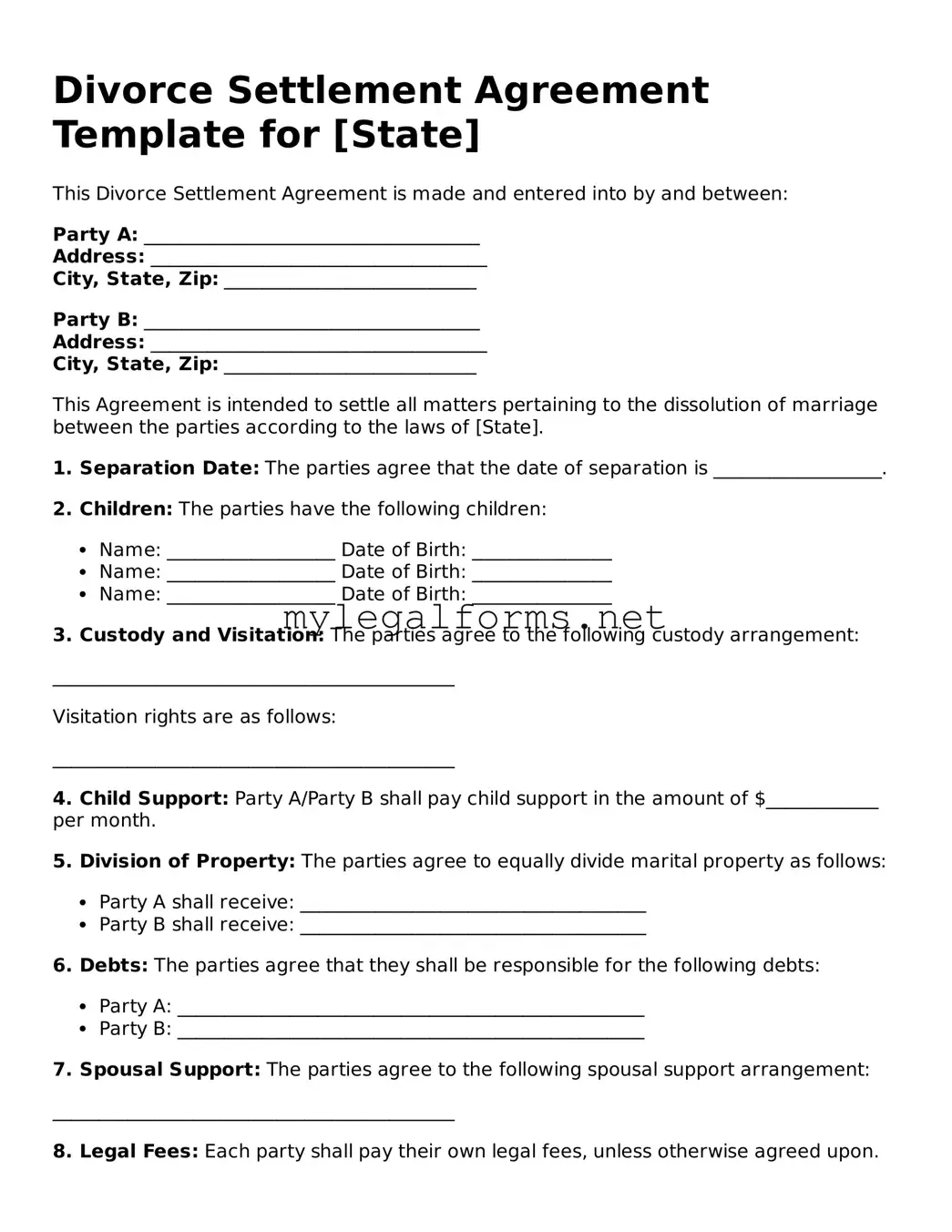Divorce Settlement Agreement Template for [State]
This Divorce Settlement Agreement is made and entered into by and between:
Party A: ____________________________________
Address: ____________________________________
City, State, Zip: ___________________________
Party B: ____________________________________
Address: ____________________________________
City, State, Zip: ___________________________
This Agreement is intended to settle all matters pertaining to the dissolution of marriage between the parties according to the laws of [State].
1. Separation Date: The parties agree that the date of separation is __________________.
2. Children: The parties have the following children:
- Name: __________________ Date of Birth: _______________
- Name: __________________ Date of Birth: _______________
- Name: __________________ Date of Birth: _______________
3. Custody and Visitation: The parties agree to the following custody arrangement:
___________________________________________
Visitation rights are as follows:
___________________________________________
4. Child Support: Party A/Party B shall pay child support in the amount of $____________ per month.
5. Division of Property: The parties agree to equally divide marital property as follows:
- Party A shall receive: _____________________________________
- Party B shall receive: _____________________________________
6. Debts: The parties agree that they shall be responsible for the following debts:
- Party A: __________________________________________________
- Party B: __________________________________________________
7. Spousal Support: The parties agree to the following spousal support arrangement:
___________________________________________
8. Legal Fees: Each party shall pay their own legal fees, unless otherwise agreed upon.
9. Miscellaneous: This Agreement represents the complete understanding of the parties regarding the matters covered herein. Any amendments must be in writing and signed.
IN WITNESS WHEREOF, the parties have executed this Divorce Settlement Agreement as of the _____ day of ____________, 20__.
Party A Signature: ___________________________
Date: _____________
Party B Signature: ___________________________
Date: _____________
Notary Public: ____________________________________
